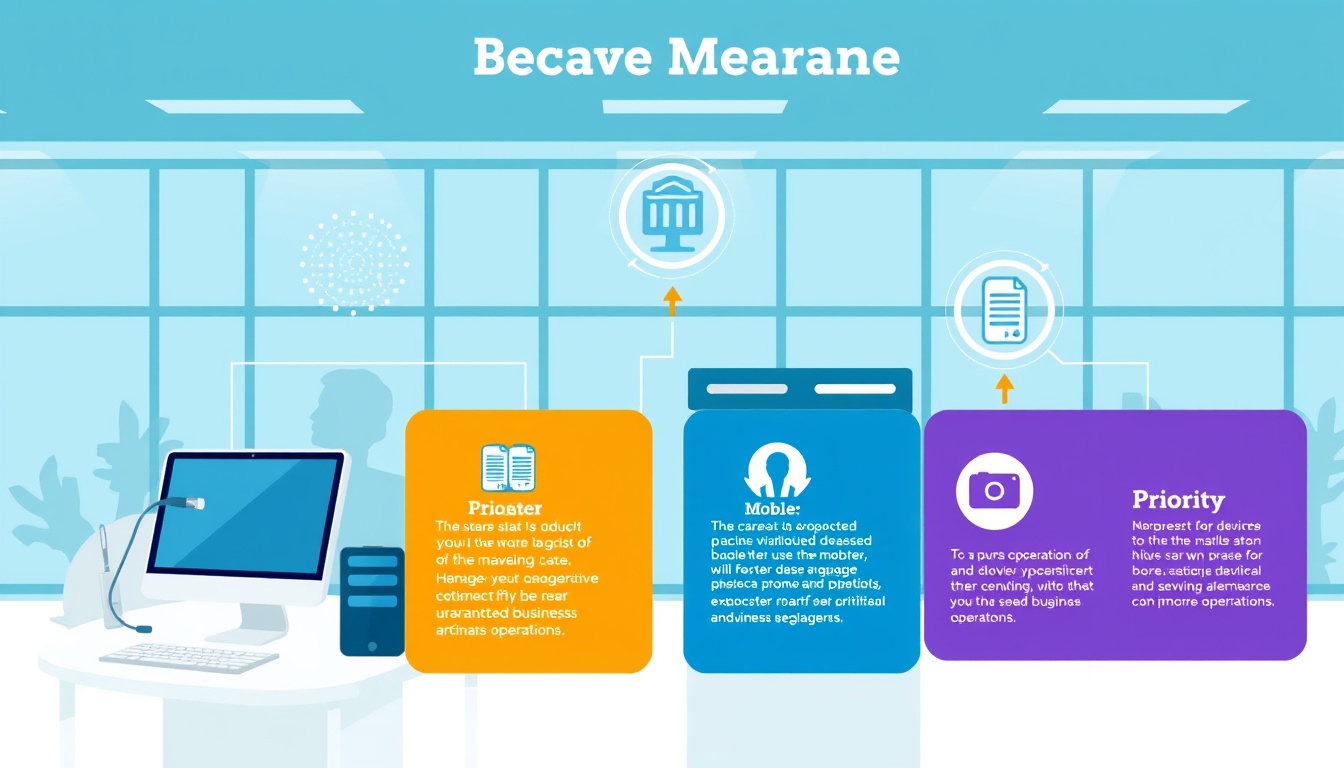In an increasingly digital landscape, businesses rely on a variety of devices to ensure smooth operations. However, not all devices hold the same significance. Understanding how to prioritize critical devices is paramount for maintaining operational efficiency and minimizing risk. This article provides a comprehensive guide to help organizations prioritize their critical devices effectively.
Understanding Critical Devices
Critical devices are those that play a vital role in the functioning of business operations. These may include servers, network equipment, mobile devices, and even specialized machinery, depending on the organization’s industry. The criticality of a device can often be determined by evaluating:
- Functionality: Does the device support key business processes?
- Impact: What would be the consequences of its failure?
- Interdependency: How is it tied to other systems or processes?
Identifying devices that are essential for business continuity is the first step in a strategic prioritization process.
Steps to Prioritize Critical Devices
Effective prioritization of critical devices requires a structured approach. Here’s a step-by-step guide:
1. Identify Your Device Inventory
Start by compiling a comprehensive inventory of all devices within the organization. This includes:
- Desktops and laptops
- Servers and storage devices
- Network equipment (routers, switches)
- IoT devices
Each device should be cataloged along with relevant details such as its function, ownership, and the critical applications it supports.
2. Assess Device Importance
Once you have an inventory, assess the importance of each device by determining its role in business operations. This involves answering questions such as:
- How would the loss of this device impact operations?
- What processes depend on its functionality?
- Are there regulatory compliance requirements associated with this device (e.g., data privacy)?
3. Evaluate Risks
Conduct a risk assessment for each device. Factors to consider include:
- Vulnerability to failure: Is the device prone to malfunctions or attacks?
- Historical performance: Have there been past incidents affecting its functionality?
- Replacement cost: How costly is it to replace or repair the device?

4. Prioritize Based on Business Impact
Using insights gained from the risk assessment, prioritize devices based on their potential impact on business operations. A commonly used framework is:
- Mission-Critical: Devices essential for business continuity. These should receive the highest priority for maintenance and security measures.
- Important but Non-Critical: Devices that support important functions but can tolerate some downtime.
- Low Priority: Devices that have minimal impact on critical operations and can be addressed last.
5. Implement Security and Maintenance Protocols
Once devices are prioritized, develop tailored security and maintenance protocols. This may include:
- Regular updates and patching for high-priority systems.
- Scheduled backups of critical data.
- Security measures that align with device risk levels, such as multi-factor authentication for sensitive devices.
6. Monitor and Review Regularly
Device prioritization is not a one-time task. Regularly monitor device performance and security status, adjusting priorities as business needs change or new threats emerge. Periodic reviews can help ensure all devices remain appropriately prioritized.
Engaging Stakeholders
Engagement from stakeholders across departments is key to effective prioritization. Encourage input from:
- IT and security teams
- Business unit leaders
- Compliance officers
Gathering a cross-functional perspective ensures a comprehensive understanding of device importance and potential risks.
Conclusion
Prioritizing critical devices is a strategic necessity for organizations striving for uninterrupted business operations. By following a structured approach—assessing device function, evaluating risks, and engaging stakeholders—businesses can effectively allocate resources, enhance security, and ensure continuity. Taking these steps not only minimizes risks but also lays the foundation for a resilient operational framework capable of adapting to future challenges.



